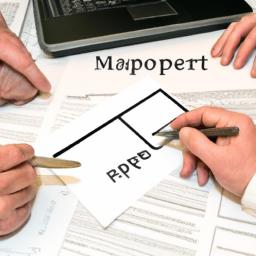Understanding ERP Software Development

In today’s fast-paced business landscape, organizations across various industries are recognizing the importance of effective Enterprise Resource Planning (ERP) software. But what exactly is ERP software development? Let’s dive into the fundamentals and explore its purpose, key components, and the benefits of developing custom ERP software.
Definition of ERP Software Development and its Purpose
ERP software development refers to the process of creating tailored software solutions that streamline and integrate various business functions within an organization. It involves designing, coding, testing, and deploying software that facilitates efficient management of resources, such as finances, human resources, inventory, and customer relationships.
The purpose of ERP software development is to provide organizations with a centralized system that enhances productivity, optimizes operations, and enables data-driven decision-making. By integrating different departments and functions, ERP software enables seamless information flow and real-time collaboration, leading to improved efficiency and enhanced business performance.
Key Components and Functionalities of ERP Software
ERP software comprises several essential components and functionalities that contribute to its effectiveness in managing diverse business processes. These include:
-
Centralized Database: ERP systems feature a centralized database that stores all relevant data, ensuring data consistency and eliminating data silos.
-
Modules and Integration: ERP software consists of various modules tailored to specific business functions, such as finance, sales, procurement, and manufacturing. These modules are tightly integrated, allowing data to flow seamlessly across departments.
-
Automation and Workflows: ERP software automates repetitive tasks and streamlines workflows, reducing manual effort and errors. This automation enhances operational efficiency and saves valuable time.
-
Reporting and Analytics: ERP software provides robust reporting and analytics capabilities, enabling organizations to gain valuable insights from their data. Detailed reports and customizable dashboards facilitate data-driven decision-making.
Benefits of Developing Custom ERP Software
While off-the-shelf ERP solutions exist, developing custom ERP software offers unique advantages for organizations. Customization allows businesses to align the software with their specific processes and requirements, leading to increased efficiency and productivity. Custom ERP software also enables seamless integration with existing systems and applications, eliminating the need for multiple disjointed software solutions.
Moreover, custom ERP software empowers organizations to adapt and scale rapidly as their business evolves. With tailored software, businesses can easily incorporate new functionalities, accommodate changing regulations, and support future growth.
In the next section, we will delve into the key steps involved in developing erp software, providing insights into the development process from inception to implementation. Stay tuned to discover how to embark on a successful ERP software development journey.
Key Steps in Developing ERP Software
Developing ERP software is a complex process that requires careful planning and execution. To ensure a successful outcome, it is essential to follow key steps that encompass various aspects of the development cycle. Let’s explore these steps in detail:
Requirement Gathering and Analysis
The initial step in developing ERP software is to gather and analyze the requirements of the organization. This involves conducting thorough discussions with stakeholders, understanding their needs, and identifying pain points that the ERP system should address. By gathering comprehensive requirements, developers can align the software development process with the organization’s specific needs.
Designing the Architecture and Database Structure
Once the requirements are clearly defined, the next step is designing the architecture and database structure of the ERP software. This entails creating a blueprint that outlines how different components will interact with each other and the overall system. The database structure is crucial as it determines the efficiency and scalability of the ERP software.
Development and Coding Process
After the design phase, the actual development and coding process begins. Experienced developers utilize programming languages and frameworks to build the ERP software from scratch or customize existing solutions to meet the organization’s requirements. This step involves writing clean, efficient, and scalable code to ensure the software’s smooth operation.
Testing and Quality Assurance
Testing and quality assurance play a vital role in ensuring the reliability and functionality of the ERP software. Thorough testing is conducted to identify and fix any bugs or issues that may arise during the development process. This includes unit testing, integration testing, system testing, and user acceptance testing to validate the software’s performance and user-friendliness.
Deployment and Implementation Strategies
Once the ERP software passes the testing phase, it is ready for deployment and implementation. Careful planning is required to ensure a seamless transition from the existing system to the new ERP software. The deployment process involves installing the software, configuring it based on the organization’s requirements, and migrating data to the new system. Implementation strategies should consider training employees, providing support, and managing change effectively.
Ongoing Maintenance and Support
ERP software requires continuous maintenance and support to ensure its optimal performance. Regular updates, bug fixes, and enhancements are necessary to keep up with evolving business needs and technological advancements. Ongoing support ensures that any issues or challenges faced by users are addressed promptly, minimizing disruptions to business operations.
By following these key steps in developing ERP software, organizations can create a tailored solution that streamlines their operations, enhances productivity, and promotes growth. The next section will delve into the factors to consider during the development process.
Factors to Consider in Developing ERP Software

When it comes to developing ERP software, several crucial factors need to be taken into consideration to ensure a successful outcome. By addressing these factors, businesses can create a tailored ERP solution that aligns with their unique organizational needs. Let’s dive into the key aspects that should be considered during the development process:
Identifying Organizational Needs and Objectives
Before embarking on ERP software development, it is essential to identify and understand the specific needs and objectives of your organization. This involves conducting a thorough analysis of your existing business processes, workflows, and pain points. By gaining a deep understanding of your requirements, you can develop an ERP system that addresses these challenges and improves overall efficiency.
Choosing the Right Technology Stack
Selecting the appropriate technology stack is another critical factor in developing ERP software. This decision involves choosing the right programming languages, frameworks, and tools that best suit your project requirements. The technology stack should be scalable, reliable, and compatible with your existing infrastructure to enable seamless integration and smooth operations.
Scalability and Flexibility for Future Growth
An effective ERP software solution should be scalable and flexible to accommodate future growth and changes within your organization. As your business expands or evolves, your ERP system should be able to adapt and scale accordingly. This ensures that your software remains relevant and supports your long-term business goals.
Integration with Existing Systems and Applications
Integrating your ERP software with existing systems and applications is crucial for streamlining operations and data flow. Seamless integration allows for real-time data synchronization, eliminating the need for manual data entry and reducing the risk of errors. It also enables cross-functional collaboration and provides a holistic view of your organization’s operations.
Security Measures and Data Protection
Data security is of utmost importance when developing ERP software. Implementing rigorous security measures and data protection protocols ensures the confidentiality, integrity, and availability of sensitive business information. Incorporating industry-standard encryption, access controls, and regular security audits helps safeguard your data from unauthorized access and potential breaches.
By considering these factors during the ERP software development process, businesses can create a robust and tailored solution that meets their specific requirements. Next, we will explore best practices for successful ERP software development.
Conclusion

Developing ERP software that is tailored to the specific needs of an organization is crucial for achieving optimal efficiency and productivity. In today’s rapidly evolving business landscape, having a robust ERP system in place can make a significant difference in streamlining operations and driving growth.
By understanding the significance of ERP software and its role in modern business operations, organizations can embark on the journey of developing their own custom ERP software. This allows for greater control and customization, ensuring that the software aligns perfectly with the unique processes and requirements of the organization.
When developing ERP software, it is essential to follow best practices to ensure success. Collaboration between the development team and stakeholders is vital to gather requirements accurately and incorporate valuable insights. Utilizing agile methodologies enables iterative development, allowing for flexibility and adaptability throughout the process.
Regular communication and feedback loops foster transparency and prevent misalignment between the development team and stakeholders. Conducting user acceptance testing ensures that the software meets the expectations and needs of the end-users, guaranteeing a seamless user experience.
Additionally, continuous improvement and optimization should be prioritized to keep the ERP software up-to-date and aligned with the changing business landscape. This involves regularly monitoring and evaluating the system’s performance, identifying areas for enhancement, and implementing necessary updates.
In conclusion, developing ERP software tailored to specific organizational needs is a crucial step toward achieving operational excellence. By following best practices and incorporating collaboration, agile methodologies, user acceptance testing, and continuous improvement, organizations can unlock the full potential of their ERP software and drive success in their business endeavors.
Remember, investing in professional ERP software development services can greatly facilitate the process and ensure a high-quality, customized solution. Discover the benefits of tailored ERP software for your organization with y8y8y8.top, your trusted partner in transformative technology solutions.





